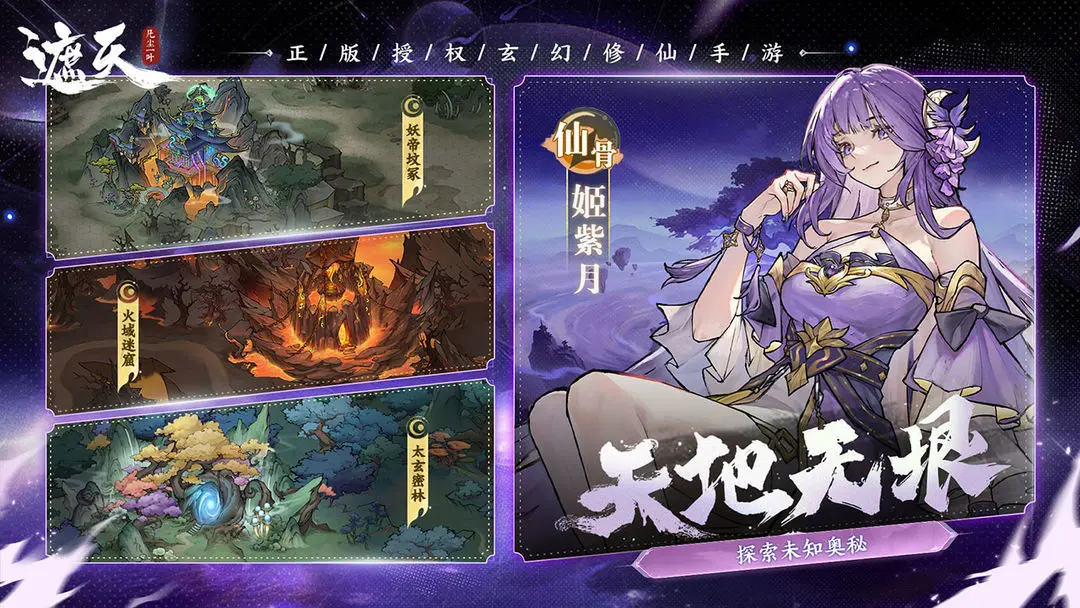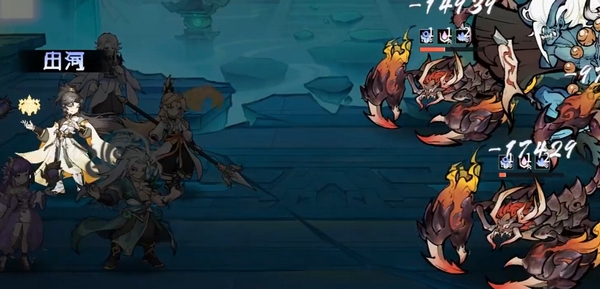Today, we will be discussing the contents of the Thousand Autumns of China cookbook. The recipe system is an essential part of creating an immersive experience, from steaming hot meat dishes to refreshing and appetizing vegetarian options, from sweet and rich desserts to a variety of wines. These dishes not only showcase diverse cooking methods but also connect different game scenarios. Whether it's advancing the plot, enhancing character status, or interacting with NPCs, recipes play an irreplaceable role. Let's take a closer look together.
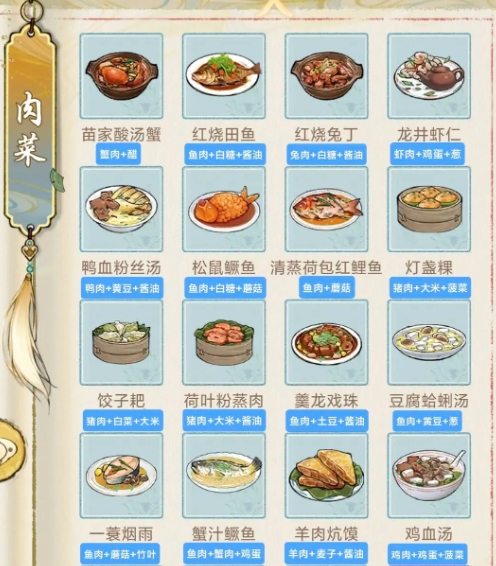
Meat dishes hold a significant place in the cookbook, and within this category, pork delicacies each have their own unique characteristics. The preparation of Dongpo Pork is almost a test of patience. Selecting skin-on pork belly, after blanching to remove blood, it is cut into large, neat pieces. These are then placed in a clay pot with brown sugar and soy sauce and simmered over low heat for several hours. Under the continuous heat, the meat gradually becomes tender, with the savory and sweet flavors penetrating every fiber. As the sauce thickens and the meat turns a bright red, it melts in your mouth, with the richness balanced out, leaving only a full-bodied aroma. Sweet and Sour Pork Loin, on the other hand, showcases a different style. The pork loin is cut into strips, marinated briefly with rice wine and salt, coated in a batter made from starch and eggs, and deep-fried until golden and crispy. After draining the oil, it is quickly stir-fried with a sauce made from brown sugar, vinegar, and tomato sauce.
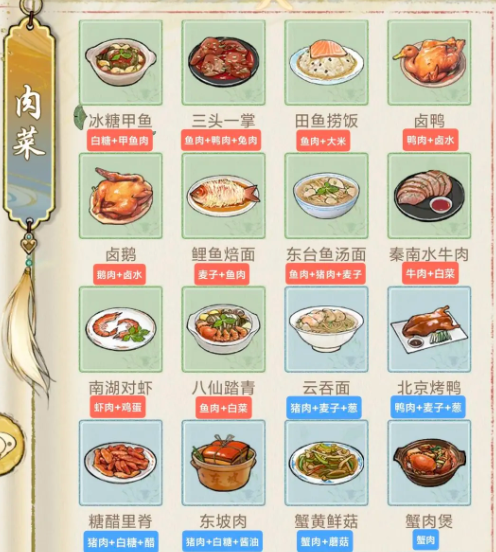
Chicken dishes demonstrate a variety of cooking approaches. Beggar's Chicken has a rustic charm. A clean Sanhuang chicken is seasoned with salt, pepper, scallions, and ginger, wrapped tightly in lotus leaves, and then coated with a thick layer of yellow mud. It is then roasted in a pre-dug pit with charcoal for several hours. The fragrance of the lotus leaves and the earthy aroma infuse the chicken under high heat. When the mud and lotus leaves are peeled off, the steam and aroma hit you, with the chicken skin slightly astringent from the lotus leaves, while the meat is exceptionally tender and juicy, with every bite filled with natural freshness.
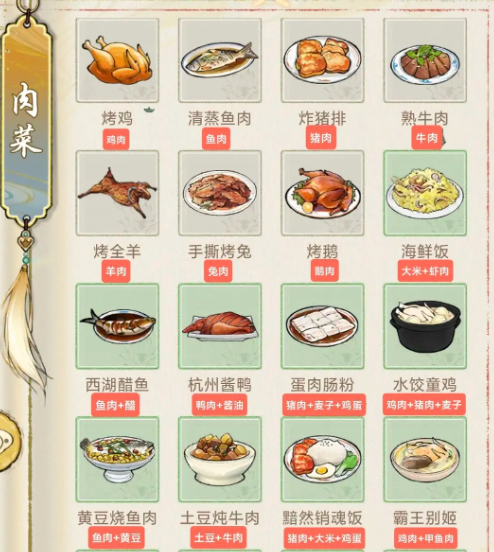
The charm of Pot Chicken lies in the fusion of flavors. The chicken is cut into pieces, sautéed until slightly golden, then stir-fried with broad bean paste, chili, and ginger. Water is added and brought to a boil, and small pieces of dough are stuck to the side of the pot. The pot is covered and simmered. Over time, the chicken broth thickens, and the meat becomes tender. The dough on the side of the pot soaks up the meaty flavor, half submerged in the broth and half crispy.
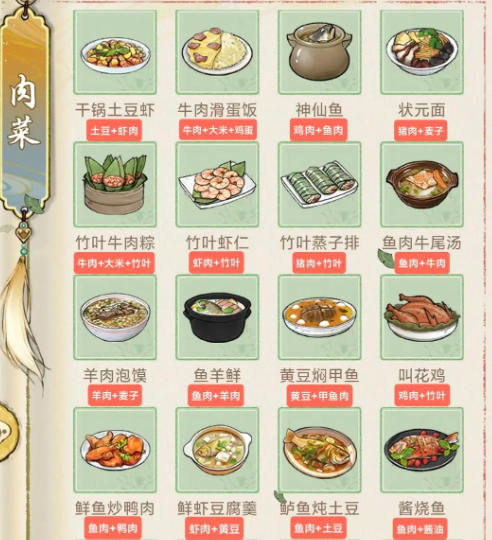
We have now introduced the contents of the Thousand Autumns of China cookbook. The recipe system in Thousand Autumns of China includes a wide range of categories and detailed cooking techniques. Each dish is closely linked to the operation of the game world. Mastering the characteristics and application methods of these recipes not only helps players make the most of resources but also enhances their understanding and immersion in the game world by perceiving the cultural elements behind the dishes.
